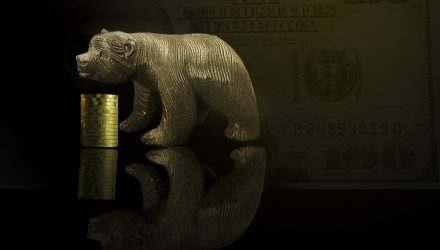As we head into the new earnings season, ongoing uncertainty over the negative impact of the coronavirus pandemic on corporate America could further fuel volatility in the weeks ahead. Exchange traded fund investors, though, can turn to alternative strategies to hedge the risks.
Market watchers should expect delayed reports, withdrawn forecasts and confusing results as U.S. businesses quantify the results from the coronavirus shutdown, CNBC reports.
“Visibility is extremely limited at this time,” UBS equity strategist Francois Trahan said in a recent note.
“Such a large range of opinions on the part of analysts covering the exact same stocks highlights the absolute lack of visibility. This could also be considered as a proxy of the confidence that analysts have in their earnings/price targets” Trahan added.
Analysts are already anticipating S&P 500 earnings growth to decline 5.2% for the first quarter, potentially marking the largest year-over-year quarterly earnings drop since the first quarter of 2016, according to FactSet data.
According to Refinitiv, 84 negative earnings pre-announcements have also been issued by S&P 500 corporations for the first three months.
“We’re going to have an earnings season that’s anything but typical,” Securities and Exchange Commission chairman Jay Clayton told CNBC, adding that the SEC said it would give public companies an extension on delivering their earnings reports, so investors should expect delays.
“These actions provide temporary, targeted relief to issuers, investment funds and investment advisers affected by COVID-19. At the same time, we encourage public companies to provide current and forward-looking information to their investors,” Clayton added.
ETF traders who are looking to protect their portfolios from potential pullbacks in the earnings season ahead may consider some exposure to bearish or inverse ETFs to hedge against further falls.
For example, the ProShares Short S&P500 (NYSEArca: SH) takes a simple inverse or -100% daily performance of the S&P 500 index. Alternatively, for the more aggressive trader, leveraged options include the ProShares UltraShort S&P500 ETF (NYSEArca: SDS), which tries to reflect the -2x or -200% daily performance of the S&P 500, the Direxion Daily S&P 500 Bear 3x Shares (NYSEArca: SPXS), which takes the -3x or -300% daily performance of the S&P 500, and ProShares UltraPro Short S&P 500 ETF (NYSEArca: SPXU), which also takes the -300% daily performance of the S&P 500.
Those who want to hedge against risk in the Dow Jones Industrial Average utilized inverse ETFs to bolster their long equities positions. The ProShares Short Dow 30 ETF (NYSEArca: DOG) tries to reflect the -100% daily performance of the Dow Jones Industrial Average. For the more aggressive traders, the ProShares UltraShort Dow 30 ETF (NYSEArca: DXD) takes the -200% of the Dow Jones and the ProShares UltraPro Short Dow 30 (NYSEArca: SDOW) reflects the -300% of the Dow.
Lastly, investors also hedged against a dipping Nasdaq through bearish options as well. For instance, the ProShares Short QQQ ETF (NYSEArca: PSQ) takes the inverse or -100% daily performance of the Nasdaq-100 Index. For the aggressive trader, the ProShares UltraShort QQQ ETF (NYSEArca: QID) tracks the double inverse or -200% performance of the Nasdaq-100, and the ProShares UltraPro Short QQQ ETF (NasdaqGM: SQQQ) reflects the triple inverse or -300% of the Nasdaq-100.
For more information on the markets, visit our current affairs category.








